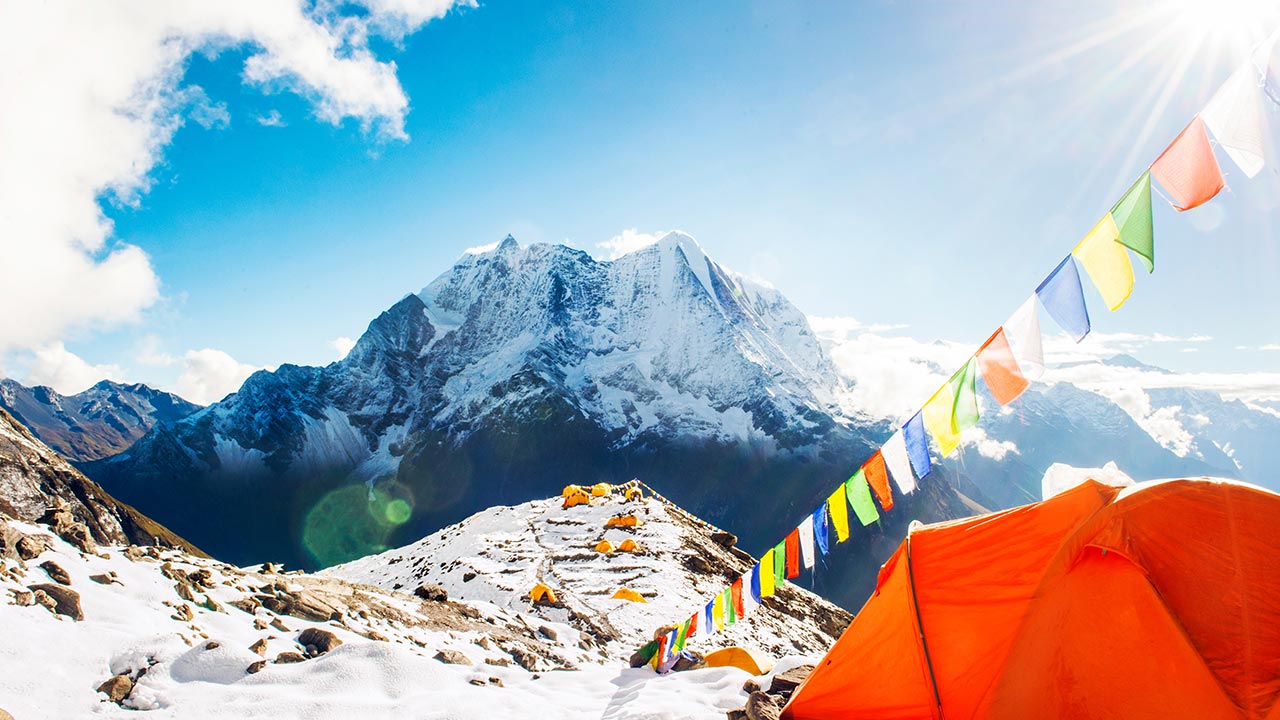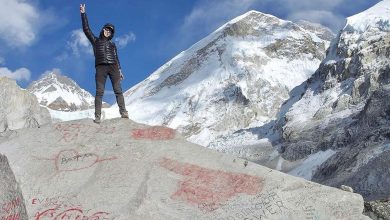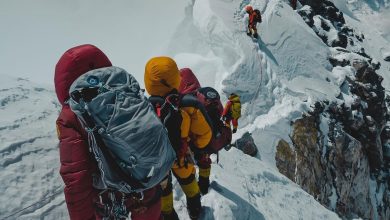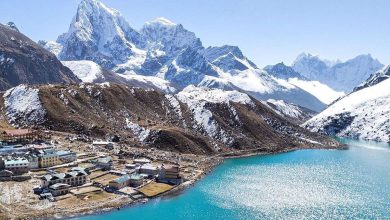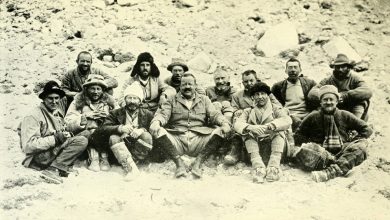Rainbow Valley Everest
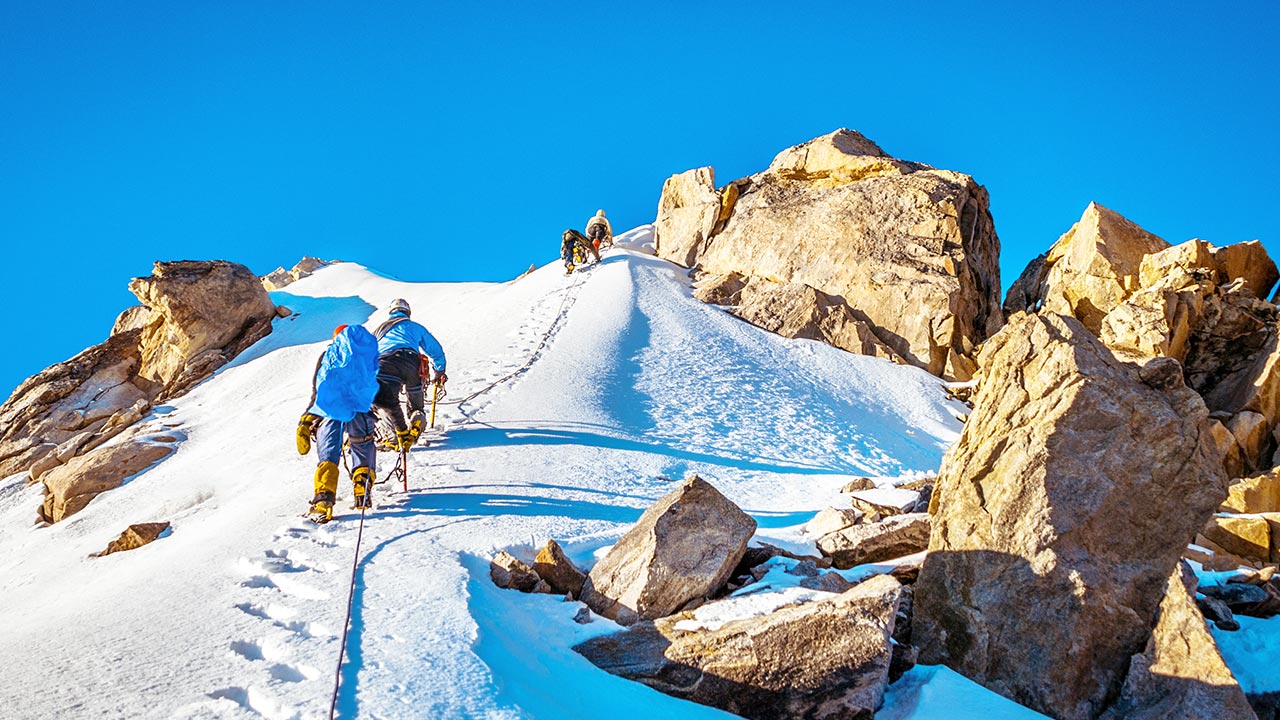

Mt. Everest (8848m) is on the bucket list of every mountaineering enthusiast. The highest mountain in the world is a great adventure ground for everyone in the mountaineering world. The Everest expedition is quite challenging and has many dark aspects to it.
“Rainbow Valley Mount Everest” is one such aspect of the ascent. While it may sound like a beautiful place, it is quite the opposite in reality. Located below the northern ridge of Mt. Everest, it is infamous for having many dead bodies of Everest expeditioners. It lies above 8000m, named the “Death Zone” by mountaineers.
Moreover, there are numerous bodies still lying in the valley. Dead bodies remain covered in their colorful jackets of blue, red, orange, and green colors. There are colorful tents, bags, dumps, cans, and oxygen tanks in the region as well. Since the area looks colorful like a rainbow from a distance, it is popularly known as Rainbow Valley Mt Everest.
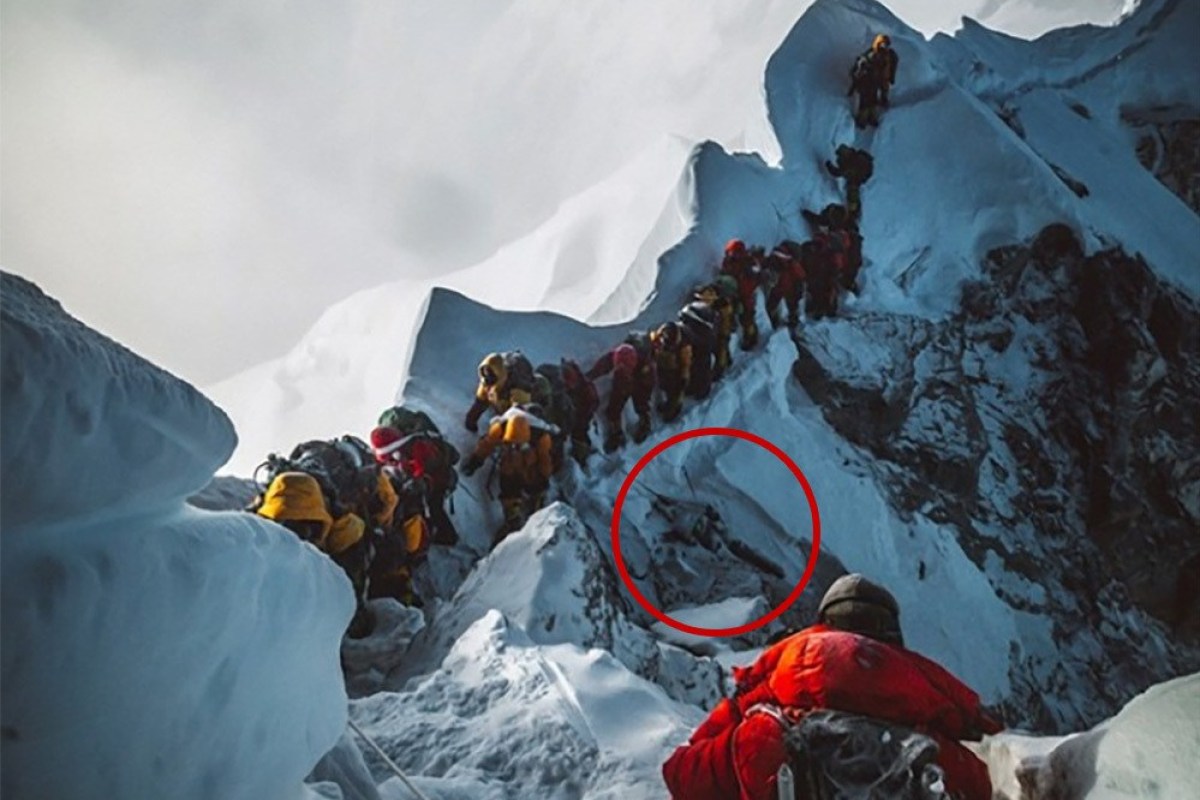
Therefore, it has become a graveyard of many climbers. There are high risks in getting these bodies down, and helicopters cannot land at such high altitudes. Since other climbers will have to put their own bodies in line, the bodies remain there forever. Read further for a detailed description of Rainbow Valley Everest and other related information in detail.
How Is The Rainbow Valley Everest Formed?
The formation of the Rainbow valley Mount Everest started with the commencement of Everest expeditions. The starting of Everest expeditions led to many climbers perishing in their journey as well. Hence, it is also known as the death zone. It lies above 8000m in altitude. Bodies either fall or get pushed by other climbers to make their way.
Pushing dead bodies becomes necessary as the route through the valley is relatively narrow. It is almost impossible to rescue dead bodies. Hence, it is essential to push them to make way for climbers. Therefore many climbers slid the bodies from the narrow footway to the Rainbow Valley Mt Everest.
Where Is The Death Zone Located In Mt Everest?
Mt Everest’s death zone above 8000m (26,247ft) in Everest summit has over 200 dead bodies. The oxygen level is relatively thin, with only one-third of the normal oxygen available. Climbers need to carry out supplementary oxygen tanks while attempting to reach the Mt. Everest summit.
Any shortage of oxygen at such a high altitude can lead to altitude sickness, which can turn fatal. The cramped route in the Death zone of Mt. Everest also made international news recently as a picture of climbers waiting for their queue went viral. The climbers need to wait for long hours in the death zone which increases their risk of fatalities.
Moreover, the recent Mt. Everest climbers have described the challenges of passing incapacitated climbers to the summit. Climbers have described bodies that resemble a mummy. More than 300 climbers have perished in death zones since 1922. An avalanche killed 19 climbers in 2015. The corpses keep on increasing in the Rainbow Valley Everest.
Why Are There Bodies Piling Up In Rainbow Valley Everest?
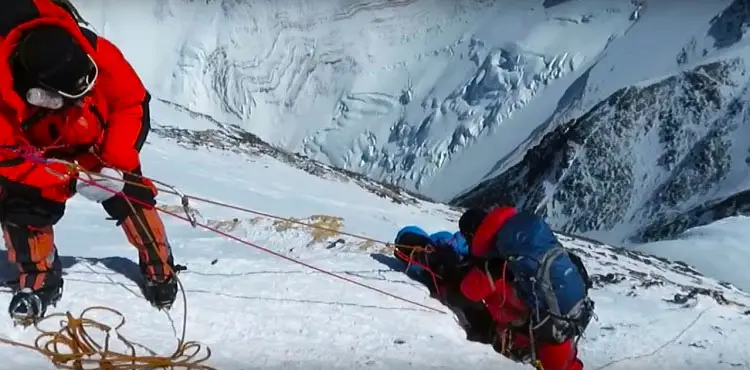
Everest is a challenging mountain to climb, and many climbers return midway due to harsh weather conditions. Everest’s death zone has also taken many lives, with many climbers having perished in areas above 8000m. There is harsh weather, low oxygen levels, and hurricane-force winds in the journey towards the summit.
Additionally, the region is also known as the death zone due to these factors. The trail remains cramped through the climbing season and only fits one body in every step. Any climber who perished during their expedition along the route gets pushed away from the path. Therefore, Rainbow Valley Mount Everest bodies are quite significant and it has turned out to be an eventual graveyard for many climbers.
What Happens To The Dead Bodies On Rainbow Valley Everest?
The corpse in Rainbow Valley Mt Everest remains forever. While some bodies may get recovered, most of them remain almost impossible to recover from such high altitude conditions. Helicopter rescue is not ideal as powerful hurricane-force winds are blowing in the death zone near the summit.
Extreme weather, harsh climate, narrow trails, and high altitude make it challenging to bring down climbers’ bodies. Also, it requires the help of multiple climbers to complete the process. The climbers have their expedition to handle and cannot risk their lives to recover a body. The cost of bringing down a body to base camp is more than 70k USD.
But the recovery can cause further deaths, and this has been the case on several occasions. In 1984 two Nepalese mountaineers died on an expedition to recover bodies from the death zone. Therefore, money cannot guarantee the recovery of the body. No one is ready to recover the body even with higher incentives. Hence, these form the pile of Rainbow Valley Mount Everest bodies.
What Is The Leading Cause Of Death On Mount Everest?
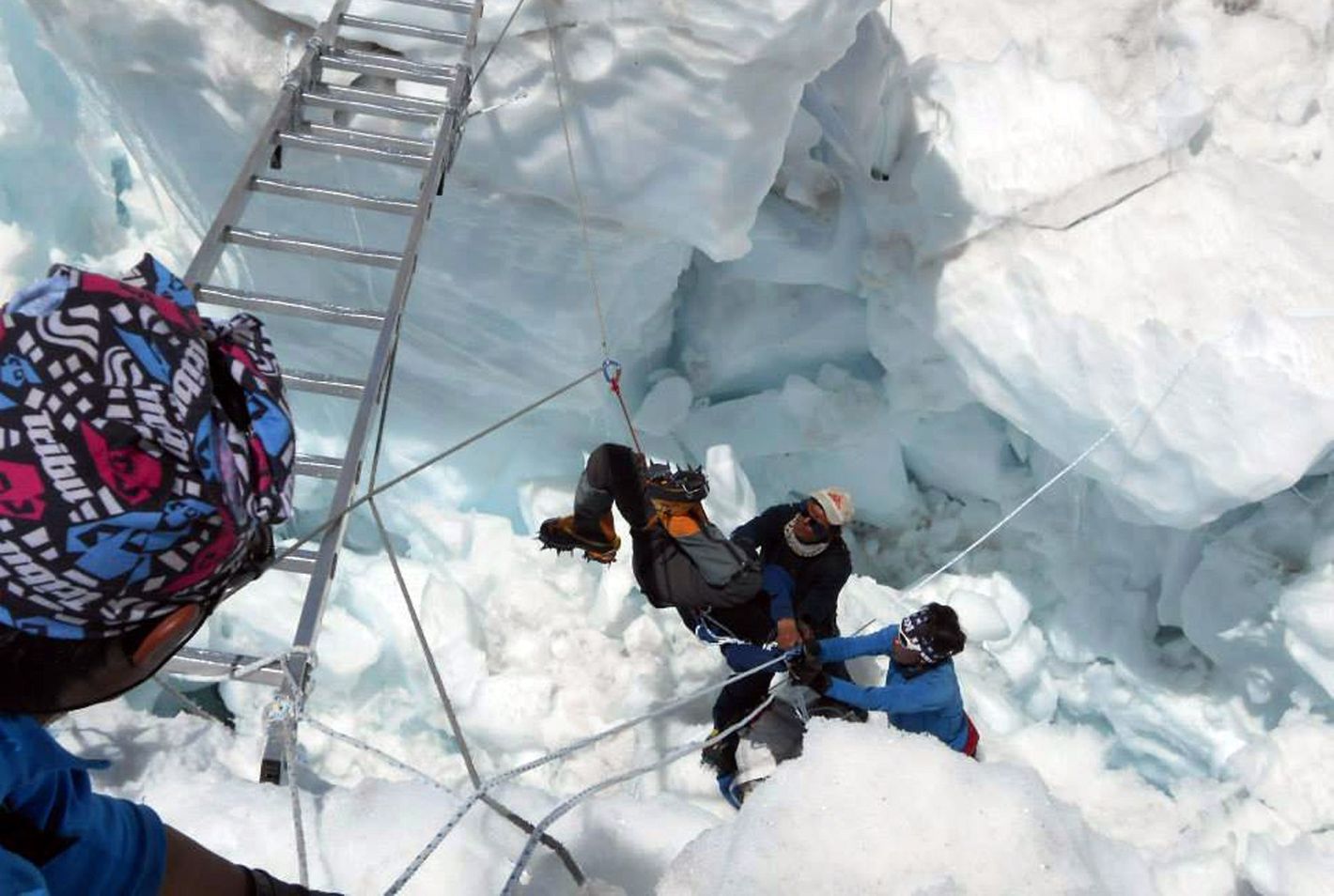
The Mountain Everest is towering above all-mountain in the Himalayan region. Even a simple misstep can cause fall and death among climbers. Every step in the high altitude Everest region gets considered as a point of death and life. Almost 5,000 climbers have conquered Mount Everest, and out of which 295 have lost their life since 1924.
Moreover, the majority of deaths in the Everest zone were due to avalanches and others due to Acute mountain disease. Fall and Exhaustion are next on the list of causes of death in the climb of Everest. The death rate has gradually decreased from 2.2% to 1%.
Everest Base Camp Stories
Climbers group up in Everest Base Camp to summit Mount Everest. Mountaineers make EBC their home for around two months in their Everest expedition. The base camp’s vibrant atmosphere is a highlight during the journey.
There are various colored tents with climbers socializing performing various activities. They perform activities like singing, dancing, sharing experiences, and telling stories. This base station is full of climbers telling the old legends to fellow climbers. Among them, most of the stories revolve around Rainbow valley Everest.
Moreover, the dead bodies Mount Everest Rainbow valley feature prominently in these stories. The Sleeping Beauty, Green Boots, and Hannelore Schmatz are some of the most famous Everest region stories. Read on to know more about these stories and their backgrounds in detail:
Green Boots
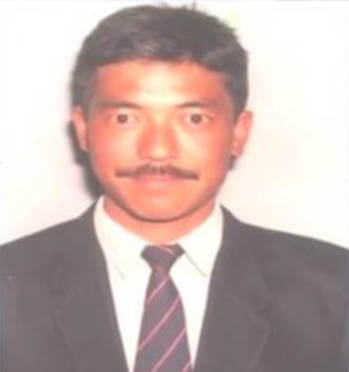
Green Boot is a true story told by climbers in their Everest Expedition. This story of Green Boots is also covered in various media. There is a dead body with a pair of green boots in the northeast corner of Everest. The striking pair of green boots and oxygen tank has made it quite a legend among climbers.
Although not proven, most climbers believe that it is the body of an Indian climber, Tsewang Paljor. He was reported missing in 1996 on his journey to Mt. Everest. There were two other climbers along with him, but their bodies were never found. However, the green boot body has been there in a small cave near the summit for a long time.
Furthermore, the body under the cave now works as a map for other climbers. Most climbers also take a rest at this spot while climbing. Hence, this Green Boots corpse has gained a cult status among climbers. The video footage of Green Boots was first recorded on May 21, 2001, by Pierre Paper, a French climber. Green Boots is famously lying on his left side in the video and faces toward the Everest summit.
In contrast, it was first reported as a Chinese mountaineer body who had attempted climbing Mount Everest six months earlier. Climber David Sharp also perished in what gets known as a green boots cave on his way towards a solo ascent of Mount Everest. The corpse is a landmark on the north route of Mt. Everest expedition and is also known as the death site of David Sharp.
Sleeping Beauty
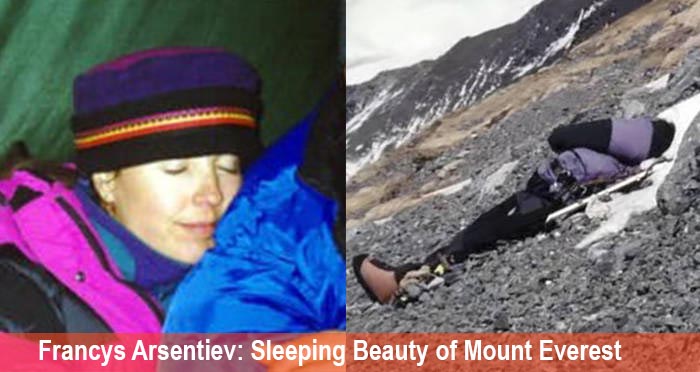
The story of Francys Arsentiev is another famous Everest Base Camp story. She was the first American lady to climb Everest without the help of supplementary oxygen. On May 22, 1998, Francys started her Everest expedition along with her husband. She was successful while ascending, but while descending, she lost her consciousness.
She was stuck for three days before a team went to her rescue. She was frostbitten and close to death when the team found her, and they tried to rope her down, but after a while, it became clear that it was almost impossible to rescue her. They had to leave her as she lay dying on her back on the backdrop of Mount Everest.
Moreover, she looked like she was sleeping and hence climbers nicknamed her “Sleeping Beauty.” Ian Woodall led an expedition in 2007, started to return the body of Francys from the mountain along with Green Boots, both of whom were visible from the nearby climbing route.
Francys Arsentiev stayed in the Rainbow Valley Everest for nine years, from May 24, 1998, to May 23, 2007. Woodall located Arsentiev’s body and dropped her to a lower location after a brief ritual. This removed the body from the view of climbers taking the northern route to the Everest expedition.
Hannelore Schmatz
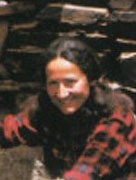
Hannelore Schmatz, a German Climber, was the first woman to perish while climbing Everest. In 1979, they, along with six other climbers and five Sherpas, made their way for the world’s tallest mountain. They ascended the mountain successfully, but while descending, they got stuck. Hannelore and American climber Ray Genet could not return to base camp.
Hence, Hannelore Schmatz became the first woman climber to perish while climbing Mount Everest. Despite successfully ascending the mountain, they were so tired they decided to stay overnight in the death zone. An intense snowstorm hit that place, and Ray Genet died due to hypothermia. Hannelore and her Sherpa guide survived. But she fell at 8290m on her way back and died.
Her corpse remained at the same place for years with their open eyes and hair blowing. Climbers passed by her during their expedition. Two other climbers died five years later on a mission to recover Hannelore Schmatz’s body. The strong wind swept Her body over the ridge. Hannelore Schmatz is hence one of the famous stories of Rainbow valley Mt Everest.
Similar articles you may like:
- Gokyo Renjo La Pass Trek 12 Days Itinerary
- How Low Can The Temperature Get On Mt. Everest?
- Nobility of Sagarmatha National Park
- Mount Everest Temperature
Mt Everest Expedition
Mt Everest is the first choice of mountain climbers all around the world. Around five thousand climbers have made it to the top of the summit. The 1% death ratio is another significant aspect of this peak. The Mt. Everest Expedition is the most significant achievement in the mountaineering world. The height of 8848m is a challenge for all, and only a few adventurers have successfully summited Everest.
Tenzing Norgay Sherpa and Sir Edmund Hillary first reached the top of the summit in 1953. Mt. Everest is a beautiful mountain, and thousands of climbers come every year to climb from all around the world. There are two primary routes, one from Nepal and one from Tibet. The southern way from Nepal is the most common and full of challenges. Tenzing and Hillary also took this route in the first expedition.
Moreover, the high elevation, harsh winds, and challenging climate make it a dangerous climbing expedition. There are hurricane-force wind blows at a summit that ranges 160 km/h (100 km/h) – 280 km/h (175 mph). The summit’s temperature decreases at a rate of 0.65 degrees Celsius per 100 meters in the high altitude Everest region.
Furthermore, the temperature ranges around 57 degrees Celsius less at the summit of Mt. Everest than at sea level. The prior experience of climbing smaller mountain peaks is essential. Hard work, skill, commitment, and determination are other important factors for this expedition.
Dangers of climbing Everest
Mt. Everest (8848.86m) expedition is one of the most challenging mountain adventures in the world. It has various risk factors and challenges that will put every experienced mountaineer at risk. Tactical training and mountaineering skills along with gears and ropework are essential for this mountain climbing expedition.
There is a “death zone” that gets located near the summit above 8000m. This dangerous section has freezing conditions and harsh weather, which are significant challenges. There are substantial ice crevasses on this mountain that can swallow climbers in an instant. Trekkers and climbers also face the risk of avalanches and fall as it is quite unpredictable.
Furthermore, glacial melting and lessening deposits of snow makes climbers tread on risky grounds. Other factors like summit fever, oxygen deprivation, and substandard management make the Mount Everest expedition difficult. Therefore, you should gain proper training skills with the use of mountaineering gear and equipment.
What is the duration of the Mount Everest expedition?
The Everest expedition is one of the most challenging mountaineering expeditions in the world. It takes around 65-days to complete, which includes all the acclimatization days as well. Actual climbing takes place for approximately 47 days, including ascending and descending from peak to base camp.
After crossing Everest Base Camp, there are still four more base camps along the summit route. Climbers pass through these base camps to arrive at the summit of Mount Everest. Trekkers will also need to acclimatize to high altitude conditions. There is also a chance for climbers to complete the Everest Base Camp trek ahead of the expedition.
You will pass through beautiful Sherpa settlements, green hills, vast meadows to arrive at the Everest base camp. The Everest Expedition is a great package that provides you with a lot of adventure. Therefore, hard work, patience, and commitment are essential for this expedition.
Everest Base Camp Trek
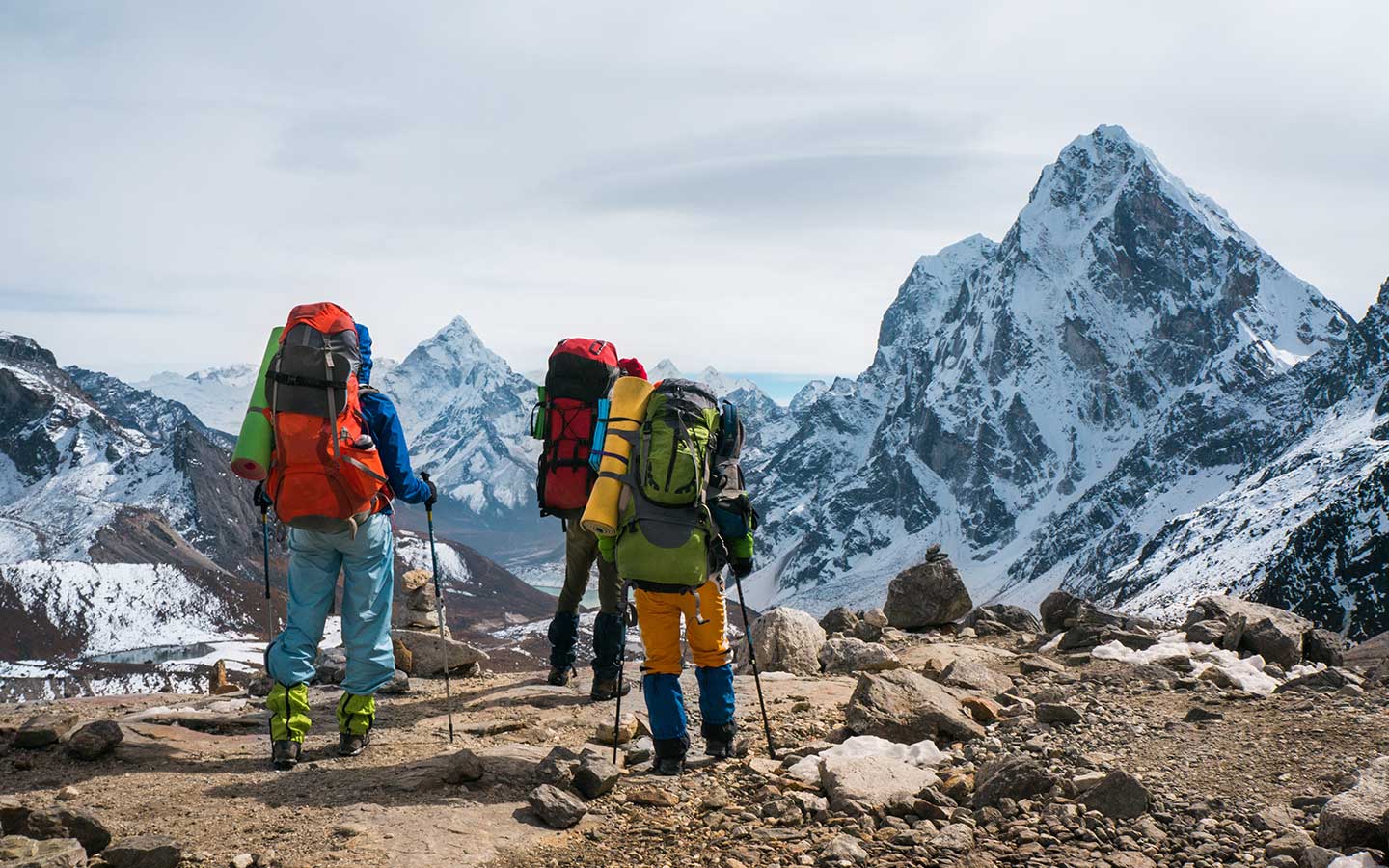
Everest Base Camp trek is an essential part of the Everest Expedition. Mt. Everest climbers need to trek the beautiful landscapes to arrive at Everest Base Camp. This moderately challenging trek starts from Lukla and passes through Namche Bazaar, Tengboche, Lobuche, Dingboche, and Gorak Shep to arrive at EBC.
Everest Base Camp trek prepares you for the summit climb and tests your endurance level. You will also get to acclimatize at high altitude conditions. This Everest base camp trek is one of the best adventures in the world. Trekkers can observe beautiful views of snow-capped mountains, including Mt. Everest, and pass through Sagarmatha National Park‘s landscapes.
Moreover, you can also take a scenic mountain flight to Lukla. You can observe the beautiful Himalayan vista. Moreover, EBC trek is one of the most essential aspects of any Everest expedition.
Everest Base Camp Helicopter Tour
The Ebc helicopter tour combines the adventure of trekking with a luxurious helicopter ride. Read on to know more about these tours in detail:
Everest Base Camp Helicopter Tour:
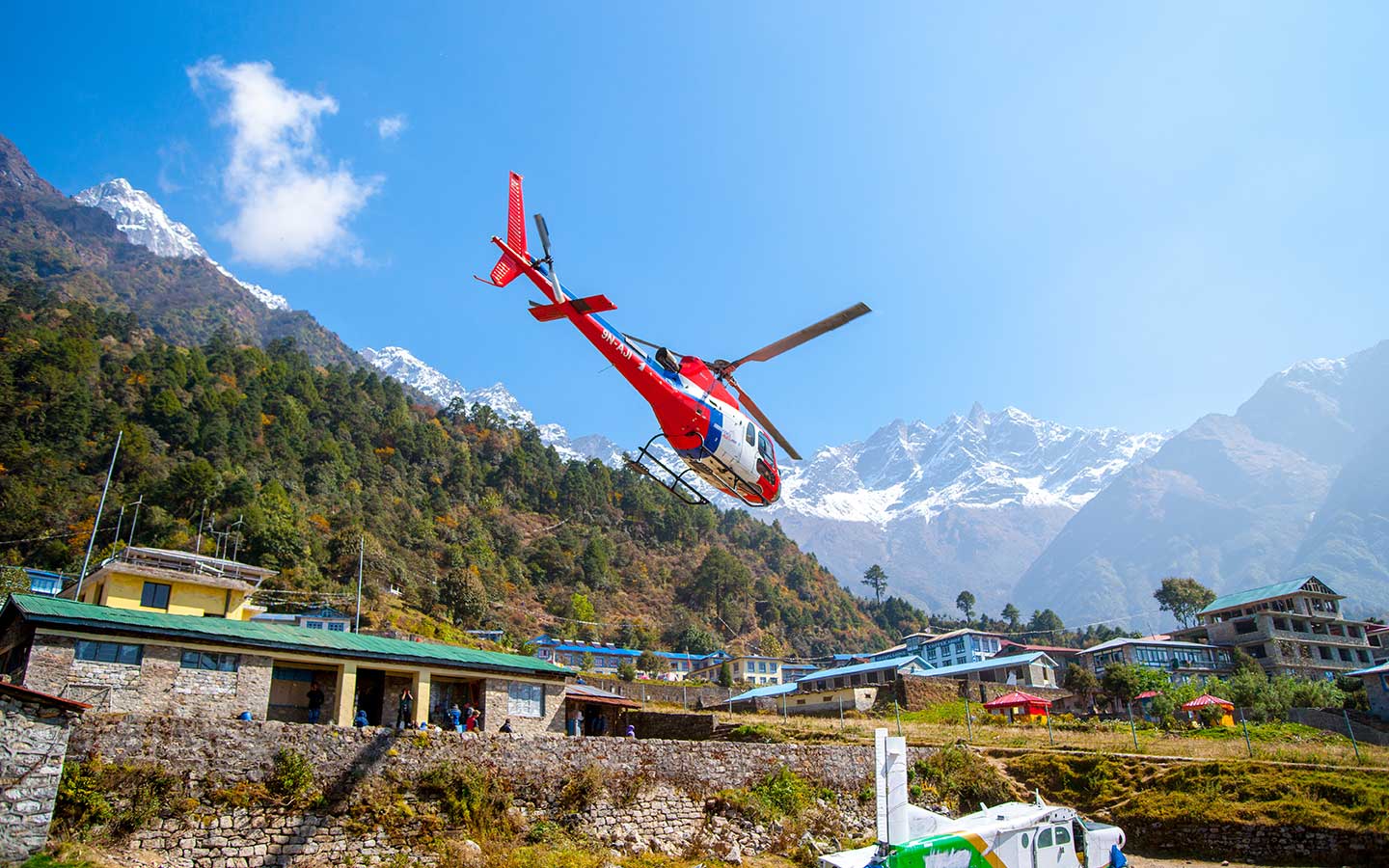
Everest Base Camp Helicopter Tour is a short-duration helicopter ride to EBC. It is ideal for those who cannot trek or have a short time in their schedule. You will take a scenic helicopter flight that will take you to Lukla and then to Kathmandu.
Additionally, the spectacular views of snow-capped mountains, green terrains, and the vast meadows will enchant you. You can also observe the beautiful settlements of Namche Bazaar and Tengboche monastery from the top. There are beautiful water streams, ice glaciers, and rivers in the region as well.
Similarly, you can also explore various ancient Sherpa settlements of the Everest region. The vibrant atmosphere of Everest Base Camp will spellbind you. After having a sumptuous breakfast, you will return to Kathmandu. The EBC Heli tour is a short-duration trip that takes only 4 hours to complete.
Everest Base Camp Heli-Trek
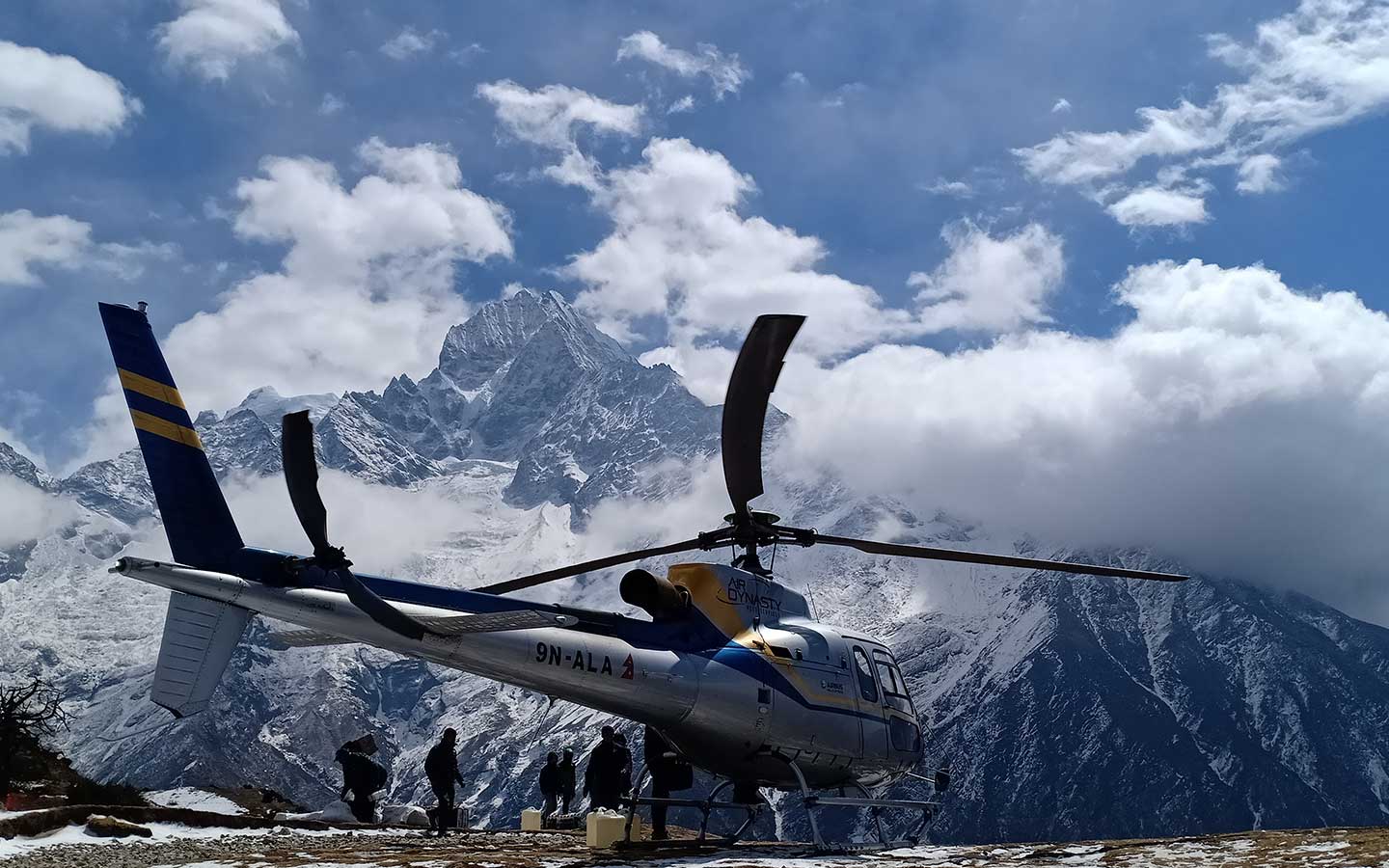
Everest Base Camp Heli-Trek is a great tour that combines an excellent trekking adventure with a luxury helicopter flight. This Heli-EBC trek includes six days of trekking in rugged and remote landscapes and then returning to Lukla on a helicopter. You will acclimatize in the middle and observe snow-capped mountains on your journey back.
Additionally, you will take a flight to Kathmandu from Lukla. Everest Base Camp trail passes through beautiful sherpa communities and ancient villages. You will also walk through the natural heritage site of Sagarmatha National Park.
Finally, after arriving and exploring the Everest Base Camp region, you will take a scenic flight back to Lukla. This tour is ideal if you want to trek beautiful landscapes but want to enjoy a lovely helicopter ride.
You may also like:
- Kathmandu to Lukla Helicopter
- Everest Base Camp trek in March
- Gokyo Renjo La Pass Trek 12 Days
- Helicopter to Namche Bazaar
Final Say
Rainbow Valley Everest sounds like a beautiful valley with incredible beauty. However, it is not a valley with immaculate beauty. It is a mere collection of dead bodies of climbers located at the northern ridge of Mt Everest. There are several dead bodies of climbers lying in this area at an altitude of 8000m.
As Everest climbing conditions are quite treacherous, many climbers perish on their way to the summit. Their bodies remain there in snow as it takes more than one climber and a lot of risk to bring them down. However, there have been some rescue expeditions in the past as well.
Since, other climbers have to risk their lives to get bodies back, most bodies remain there forever. Many bodies in their colorful gear of jackets and boots also act as a landmark for the Everest expedition. These bodies get pushed or slid by climbers to make way for their own expedition.
We hope you learned about Rainbow valley Everest and other related information in detail. Contact us for more details regarding Everest expedition and EBC treks. We provide safe and exciting trips to these adventure destinations.
